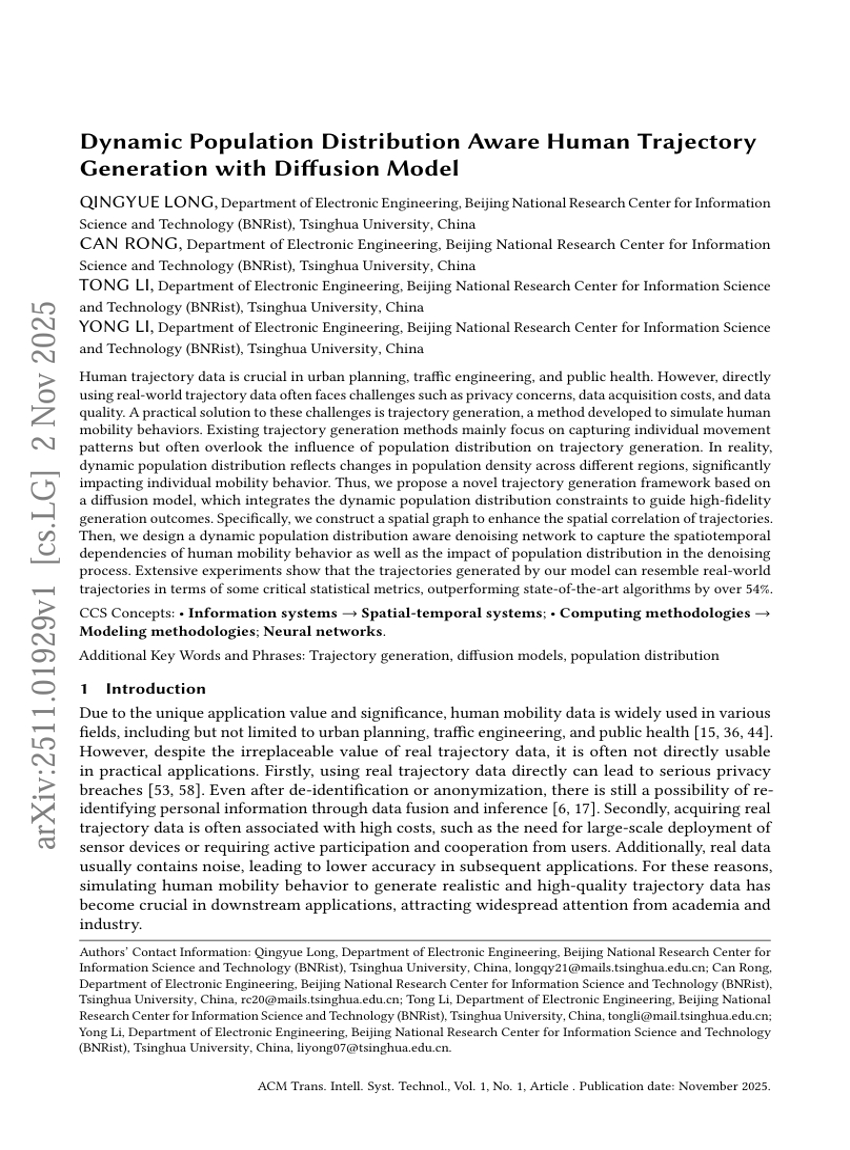Dynamic Population Distribution Aware Human Trajectory Generation with Diffusion Model
Qingyue Long Can Rong Tong Li Yong Li

Abstract
Human trajectory data is crucial in urban planning, traffic engineering, and public health. However, directly using real-world trajectory data often faces challenges such as privacy concerns, data acquisition costs, and data quality. A practical solution to these challenges is trajectory generation, a method developed to simulate human mobility behaviors. Existing trajectory generation methods mainly focus on capturing individual movement patterns but often overlook the influence of population distribution on trajectory generation. In reality, dynamic population distribution reflects changes in population density across different regions, significantly impacting individual mobility behavior. Thus, we propose a novel trajectory generation framework based on a diffusion model, which integrates the dynamic population distribution constraints to guide high-fidelity generation outcomes. Specifically, we construct a spatial graph to enhance the spatial correlation of trajectories. Then, we design a dynamic population distribution aware denoising network to capture the spatiotemporal dependencies of human mobility behavior as well as the impact of population distribution in the denoising process. Extensive experiments show that the trajectories generated by our model can resemble real-world trajectories in terms of some critical statistical metrics, outperforming state-of-the-art algorithms by over 54%.
Build AI with AI
From idea to launch — accelerate your AI development with free AI co-coding, out-of-the-box environment and best price of GPUs.